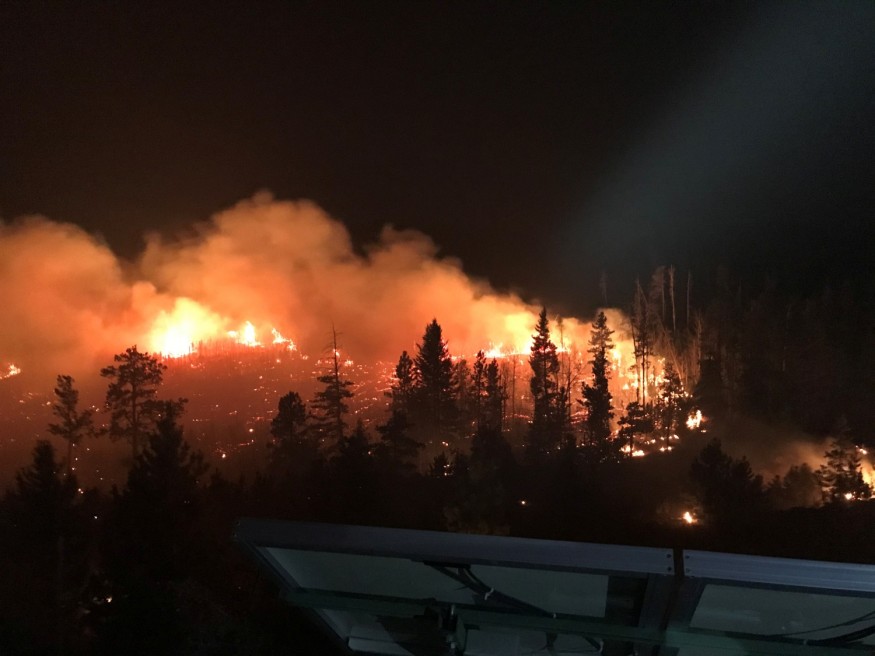A red flag fire warning has been issued in Colorado with two wildfires that, accompanied by gusty winds, are rapidly growing and are threatening to merge into one large mega-fire in Colorado's Rocky Mountains.
Thousands are forced to evacuate to safety. According to CBS News, it is the worst fire some of the residents have ever experienced, as they saw the fire and thick smoke close in on their homes. This was a terrifying ordeal for residents in affected areas.
Many of the locals got out and did not take a chance with the fires. For those who did, it was a smart move as the fires devastated their homes, some completely burning them to the ground.

READ: Wildfires Are a Real but Undisclosed Risk for Millions of Areas and Homes
The Staggering and Rapid Spread of the Fire
The wildfire has grown at a staggering rate overnight, thanks to the abundance of dry, dead timber and high winds. The coverage of the fire grew rapidly from just 19,000 acres to over 125,000 acres in just a few hours.
According to Grand County Sheriff Brent Schroetlin, they never expected the fire to reach 100,000 acres. They planned for the worst, but the current situation, he says, is the "worst of the worst of the worst."
Firefighters Battling the Blazes
In the densely wooded hills of the Colorado Rocky Mountain National Park, almost 300 firefighters are in the battle to contain the fires as they continued to spread. They are expecting extreme difficulty in the coming days.
Meanwhile, thousands have been ordered by mandatory evacuation to flee from their homes.
READ ALSO: Fire on Kilimanjaro in Tanzania Now Controlled
100,000 Acres Burned in a Single Day
The current disaster grew even worse, with the fire in the Rocky Mountains expanding by more than 100,000 acres in just a single day since Wednesday morning.
The dried pines and high winds fueled the blazes which started to travel eastward. It forced authorities to close the National Park.

The East Troublesome Fire
According to KKTV 11 News, so far, only 5% of the fire has been contained and classified the fire as being the fourth largest fire in the history of Colorado. As of the latest update from CNN, it is the second largest.
Breaching the Continental Divide
KKTV 11 reported that officials still do not know what caused or triggered the fires. The blazes already traversed the Continental Divide. Plumes of smoke have risen 40,000 feet up into the atmosphere.
The fire began last October 14, 2020, at Arapaho National Forest's Grimes Peak, and by Thursday, it has already burned approximately 170,000 acres and reached the upper regions of the Rocky Mountain National Forest, as reported by CNN's Brandon Miller.
According to Noel Livingston, Incident Commander, the growth of the fire is unheard of in the US.
Merging with the Cameron Peak Fire
According to fire officials, this fire may merge with the Cameron Peak Fire, which is the largest fire ever recorded in the state. The Cameron Peak Fire is currently 55 percent already contained.
According to the state director for public safety Stan Hilkey, only 10 to 15 miles separate the Cameron Peak Fire from the East Troublesome Fire.
In northern California, New Mexico, and Utah, red flag warnings for large wildfires were announced as well. Colorado State officials are hoping to contain the wildfires by November 10 in and drop the red flag warning as soon as possible.
READ NEXT: Indigenous Burning Techniques: Protecting Forests from Wildfires the Native American Way
Check out more news and information on Wildfires on Nature World News.
© 2025 NatureWorldNews.com All rights reserved. Do not reproduce without permission.

